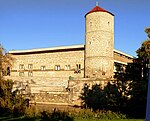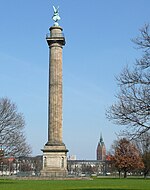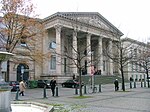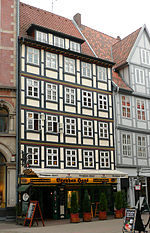Neustädter Kirche, Hanover

The Neustädter Kirche (church of the new town) is a main Lutheran parish church in Hanover, Lower Saxony, Germany. The official name is Neustädter Hof- und Stadtkirche St. Johannis zu Hannover (St. John's Church of the court and the city in the New Town at Hanover). The Baroque church was built in 1666–70. It is one of the oldest Protestant Saalkirchen (aisleless churches) in Lower Saxony, conceived for the sermon as the main act of the Lutheran church service. Mathematician and philosopher Gottfried Wilhelm Leibniz and Field Marshal Carl August von Alten are buried here. The church is known for its church music, performed in service and concert by the Kantorei St. Johannis (St. John's chorale), and serves as a venue for concerts, for example in the context of the Expo 2000 and the Kirchentag. It houses a "Spanish organ", suitable for early Baroque music, in collaboration with the Hochschule für Musik und Theater Hannover.
Excerpt from the Wikipedia article Neustädter Kirche, Hanover (License: CC BY-SA 3.0, Authors, Images).Neustädter Kirche, Hanover
Rote Reihe, Hanover Calenberger Neustadt (Centre)
Geographical coordinates (GPS) Address Website External links Nearby Places Show on map
Geographical coordinates (GPS)
| Latitude | Longitude |
|---|---|
| N 52.371111111111 ° | E 9.7286111111111 ° |
Address
Neustädter Hof- und Stadtkirche (Neustädter Hof- und Stadtkirche St. Johannis)
Rote Reihe 8
30169 Hanover, Calenberger Neustadt (Centre)
Lower Saxony, Germany
Open on Google Maps











